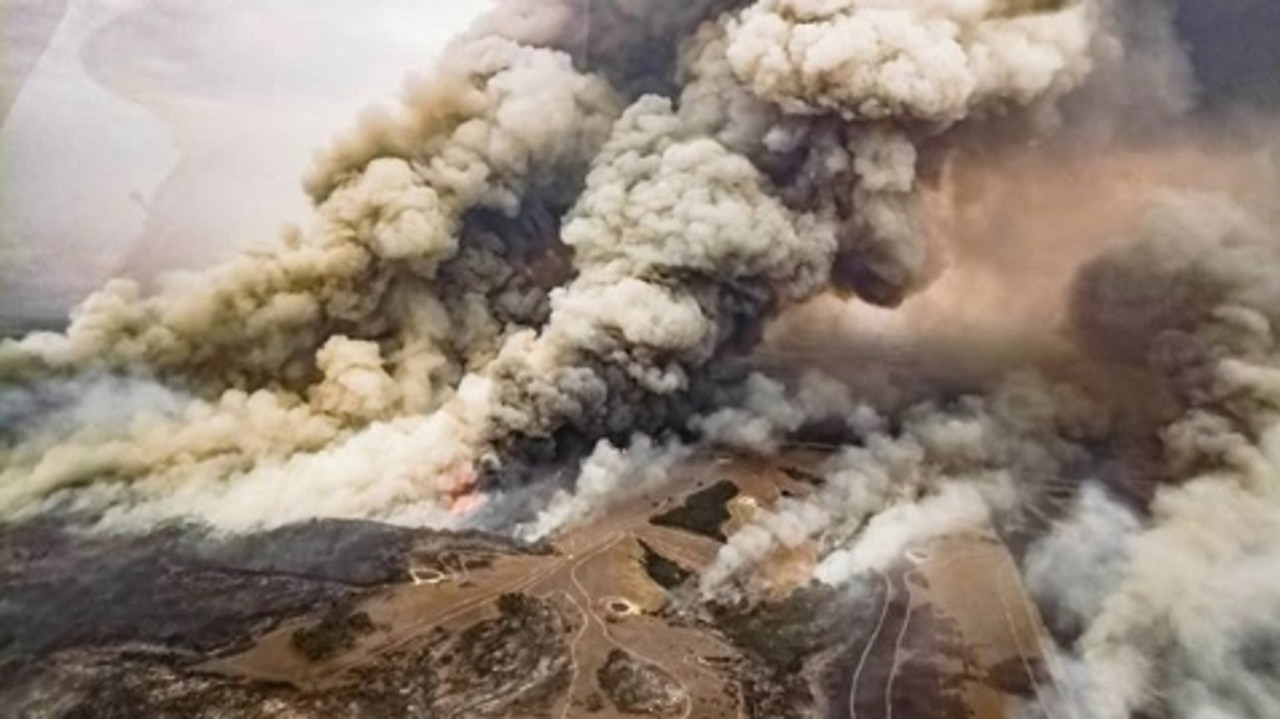How the January 4 Kangaroo Island fire tore across the island
It took just 24 hours for a worrying fire on the western end of KI to unleash fury unlike anything locals had ever seen. This is how it became a disastrous week-long blaze.
SA News
Don't miss out on the headlines from SA News. Followed categories will be added to My News.
- Fire threat downgraded on KI as rain falls, but danger still present
- Video: Unbelievable fire storm as men try to defend home
Battered residents had barely caught their breath before one large fire raging through farms and forests combined with another in a national park to burn one-third of Kangaroo Island, destroying everything in its path.
In less than 24 hours, the massive inferno would kill two people, level more than 100 buildings including 60 houses, injure more than 100,000 sheep and 5000 cattle so badly they would need to be shot, wipe out countless native animals, damage most of the island’s forests and kill thousands of rare bees.
The first fire – named the Duncan fire after the area where it began on December 20 – had been burning for 10 days on the northern coastline when lightning strikes hit a remote ravine near the Cape Borda lighthouse at the top of Flinders Chase National Park early on December 30.
New growth from a gigantic blaze that ravaged the vast park in 2007 fuelled the fire for four days before the Duncan fire broke containment lines on January 3, and merged with its eastern flank.
Pushed by a northerly wind, the fire – which officially became the Ravine Fire – created four “fingers”, which united to create a formidable front that headed straight towards the park’s visitors centre near its southern entrance.
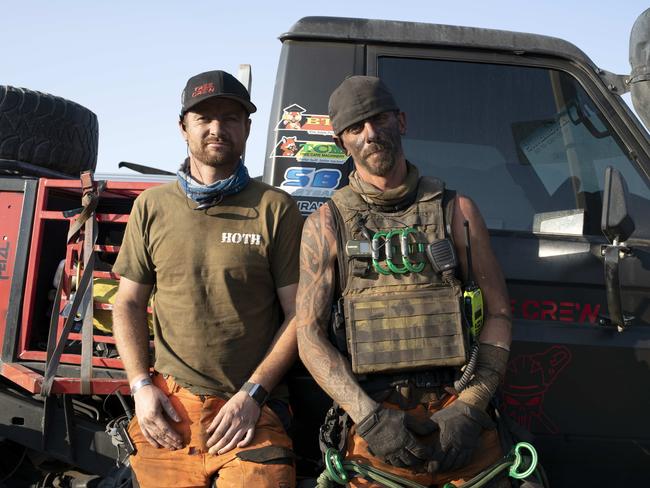

Helping two CFS crews to create containment lines around the complex ahead of the fire were two volunteer arborists – former soldiers Gareth Desmond and Luke Adamson.
The pair, known for their fatigues, face paint and tattoos, had left the still-smouldering Cudlee Creek fire, in the Adelaide Hills, to head straight to Kangaroo Island.
As they chainsawed trees near the multimillion-dollar visitors’ centre, a huge smoke plume emerged above the dense scrub, billowing like a gigantic grey cumulus cloud. The time was around 11.30am.
“Everyone was pretty relaxed,” Mr Desmond recounted this week.
“We had no idea what was coming. Next minute there were all these sirens and all hell broke loose.
“Big embers were coming down all around us and Luke grabbed a hose to put them out. We turned around and this huge wall of flame was coming over the hill.
“I’ve never seen anything like it in my life anywhere.”
The CFS volunteers rushed for their truck’s cabin, activating its emergency watering system and pulling down heat shields. Mr Desmond and Mr Adamson climbed on to the back of an appliance, covering themselves with fire blankets.
“The flames just came roaring over us, engulfed the whole area and kept going,” Mr Desmond said.
“We waited until it was relatively safe and then got the hell out of there in our ute.”
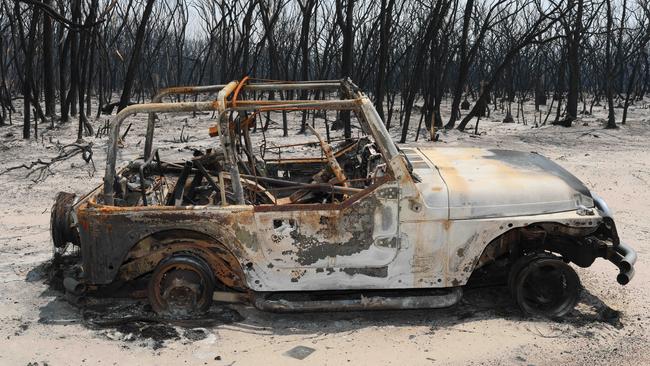
By now the firefront was stretching across the 20km width of the national park and had jumped across the Western Hwy into commercial plantations of pinus radiata and Tasmanian blue gum.
As it continued south towards the iconic Admiral’s Arch and Remarkable Rocks formations, the wind swung to a westerly, pushing the blaze directly towards picturesque Hanson Bay, 10km east.
Tourist attractions in the area include the internationally renowned Southern Ocean Lodge.
Other, more modest facilities were a wilderness sanctuary, a caravan park, a retreat with cabins and a restaurant, a former school at Karrata used to host student bush camps, and modest cabins with spectacular views of pristine Hanson Bay.

Residents, shack owners and workers at the various facilities had been warned to evacuate during the morning. Many heeded the advice; others remained behind.
As the fire bore down on the tiny coastal community, everyone fled except the staff at the Southern Ocean Lodge, who moved to an emergency bunker.
Within the space of an hour virtually all structures at Hanson Bay were obliterated, with the ferocious fire showing no discrimination between humble beach shacks and the luxury $60 million clifftop resort, which had hosted wealthy guests from across the globe.
The fire continued its destructive path eastwards, leaving the entire Hanson Bay looking like it had been hit by the apocalypse. Almost everything had been wiped from the face of the Earth, creating an eerie, almost lunar landscape.
All that was left were blackened trees, scorched vehicles, ruined forests, blackened dunes and sheets of buckled corrugated iron banging in the wind.

The heat was so intense that it melted the alloy wheels of abandoned cars and vans. Amazingly, Hills hoists remained relatively intact at several properties.
As the fire continued its eastwards march, the Southern Ocean Lodge staff were rescued by CFS volunteers and Department of Environment and Water staff who risked their own lives to drive through hundreds of burning trees with falling branches to get them to safety.
Those who had already fled towards Vivonne Bay along South Coast Rd from the Hanson Bay Cabins, KI Wilderness Retreat, Hanson Bay Wildlife Sanctuary and Hanson Bay Caravan Park also narrowly escaped with their lives.
Racing behind them was a fire front which, according to one seasoned CFS firefighter, was travelling at 4km a minute. As the evacuees got closer to Vivonne Bay, the wind changed to a southerly. By now, it was late afternoon.
Kingscote residents Glenda Wilby and Brently Golder own one of four shacks on crown land perched on small cliffs overlooking Hanson Bay.

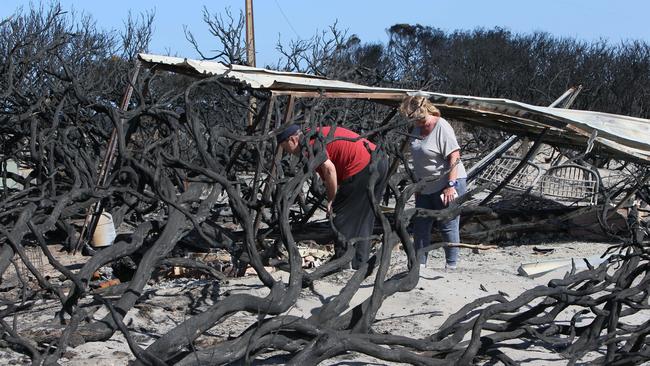
All of the shacks were destroyed along with four of the Hanson Bay Cabins accommodation. Amazingly, two adjacent cabins escaped with minor damage. Mr Golder, 60, who was born on Kangaroo Island, said the extent of the destruction was incomprehensible.
“This wasn’t a bushfire, it was a firestorm,” Mr Golder said when he and Ms Wilby, 57, returned to Hanson Bay for the first time since the fire.
“It was like a bomb had gone off. There was so much destruction. When the wind shifted to the south, it pushed the fire straight up the middle of the island. Nothing in front of it stood a chance.”
As the fire turned towards the north around 6pm, residents still at Parndana, in the middle of the island, braced for the worse.
Only days earlier, the Duncan fire had threatened to devour their homes and businesses, with many crediting fire retardant sprayed on its northern outskirts for saving their properties.
The Ravine fire presented a whole new danger, with residents again advised to either leave or prepare to defend their properties.
By late afternoon, most had relocated to Kingscote, Cygnet River and Penneshaw as the fire continued to march across a third of the island’s width, swallowing up dozens of farms and forest plantations.
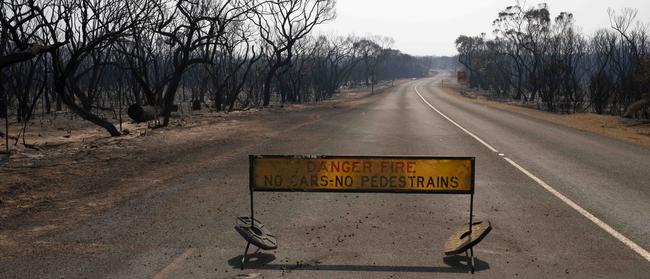
Their concerns were well-founded. By 8.30pm, the wind had moved again, this time to a north-easterly. Remaining residents were told to evacuate to Kingscote and Penneshaw.
Somehow, the fire front missed Parndana, instead crossing the main road that dissects the island – Playford Hwy – and moving north, burning whatever had been spared from the Duncan fire only days earlier.
This included the Western Districts Football and Netball Club, Stokes Bay Community Hall, numerous homes on farms run by families for generations, rental properties with tenants, hundreds of paddocks and thousands of kilometres of fencing.
Killed or badly injured were thousands of sheep and cattle. Most of the suffering animals had to be shot over the following 48 hours, with some farms running out of ammunition. Countless koalas, kangaroos and wallabies perished, their burnt, bloated carcasses lining roads for kilometre upon kilometre. Houses were destroyed on either side of the Playford Hwy. One woman lost all four homes she owned on one property. Another family lost three houses on three farms.
Those who did not leave but chose to defend their properties somehow survived, with many emerging with incredible tales of survival. One man grabbed a woollen blanket and lay down in a paddock already blackened by the Duncan fire as the new fire emerging from the south swept past him.
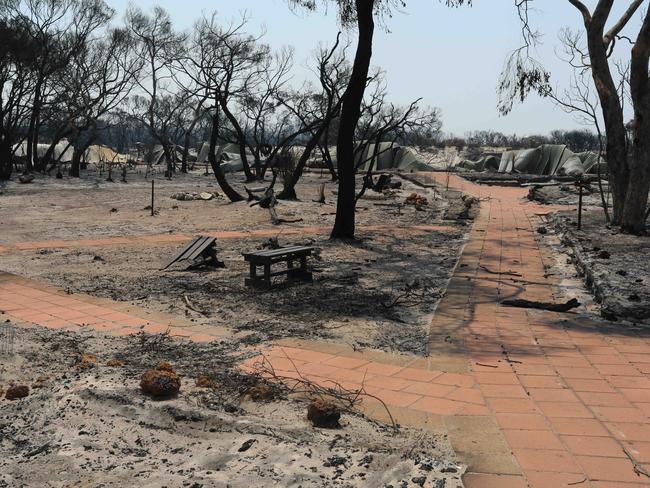
Among other remarkable stories was how well-known beekeeper Peter Davis and two of his sons survived as a house was engulfed in flames near the Western Hwy.
Mr Davis, the owner of the island’s biggest honey company, Island Beehive, had sought shelter with sons Ben and Brenton as flames burnt everything around the house.
The trio escaped through kilometres of thick smoke and falling embers behind a private firefighting unit, dodging falling trees and powerlines until they reached safety.
Mr Davis said they did their best to save the property before they took shelter. In the end, they had no option but to abandon their hoses.
“Unfortunately, we were unsuccessful and lost everything, including the house, farm, over 400 sheep, over 400 beehives and Brenton’s ute,” he said. “We got out at the end in two utes that sustained heavy fire damage.”
Not so fortunate was legendary bush pilot Dick Lang and his son, plastic surgeon Clayton, who died as they tried to get back to their property after trying to save a neighbour’s house. Their bodies were found at a burnt-out ute beside Parndana Hwy by a senior paramedic who had risked his own life to help people trapped in the inferno.
By now it was 9pm and the fire was continuing to move north up Stokes Bay Rd, across to Middle River and Snug Rd, burning whatever remained after the Duncan fire had vented its fury 10 days earlier.
Little was spared on Stokes Bay Rd, a thriving and proud farming community built by soldier settlers under grants provided in the 1950s. Among them was decorated war hero Dean Stanton, who was 22 when he flew 80 missions as a bomber pilot over Italy.
The 97-year-old and his Chicago-born wife, Mamie, 82, were sitting in their house at the top of the Stokes Bay hill when the power went out, plunging them into darkness.
A neighbour, Helen Wurst, knocked on their door shortly after, telling them they had to get out urgently. As Mrs Wurst drove them to Kingscote, the fire descended on her family’s farm, destroying a 70-year-old homestead recently renovated by her son, Thomas, and his wife, Stephanie.
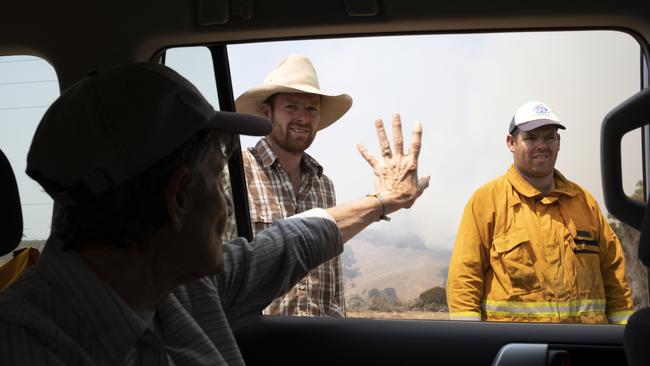
Also wiped out was a stand of huge sugar bush gums, tall majestic trees found across Kangaroo Island and a source of pollen for the Ligurian bees.
The fire was raging across the road, wiping out three properties owned by Mr Stanton’s three sons and their wives – Paul and Katja, Richard and Kate, and John and Carol.
Paul and Katja lost a popular petting zoo, where countless children had spent time with koalas, kangaroos, emus, cattle and sheep.
Richard and Kate lost a prominent Dorset and Merino sheep stud which regularly won national prizes for the quality of its rams. John and Carol lost a native bush garden renowned across Australia for its quality.
Kate Stanton and Mrs Wurst also lost a cherished community hall they had spent years renovating with other members of their tight-knit community.
The project was only completed late last year, with its official opening in November. Newly installed airconditioning was used for the first time at its annual Christmas pantomime for local children.
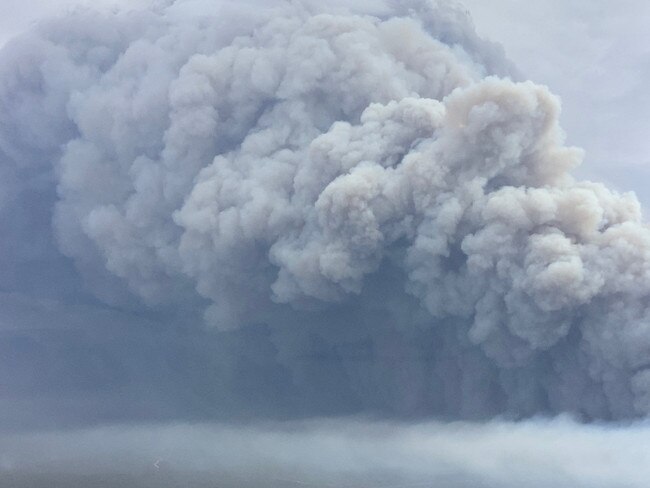
The fire was not finished. It burnt more farmland before reaching Stokes Bay, where houses near its picturesque beach survived because of modern engineering and expensive sprinkler systems.
It kept going until it reached the coastline around midnight, burning hills which ended with sandy shores. The seawater stopped it in its tracks.
With nowhere to go forwards, the fire began moving west from Stokes Bay to Middle River, Western River Cove and Snug Cove, large parts of which already were burnt by the Duncan fire and where it was eventually contained.
Among these properties were farms run by the family of Attorney-General Vickie Chapman for six generations. Miraculously, none of her houses or other buildings were destroyed. Only a truck was burnt.
Ms Chapman said if people wanted to help victims of the fires, such as lifelong friend Kate Stanton, they could donate to the Mayor’s Bushfire Fund, keep visiting the island, buy its various produce and donate fodder.


